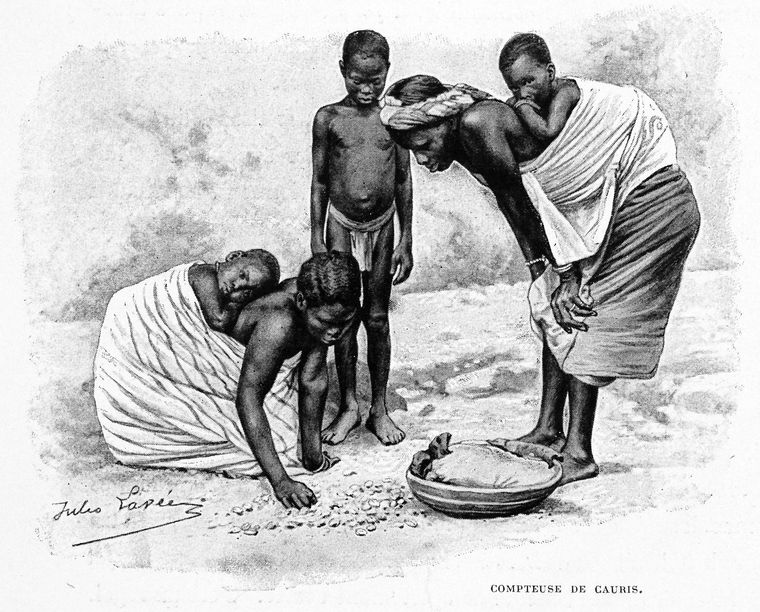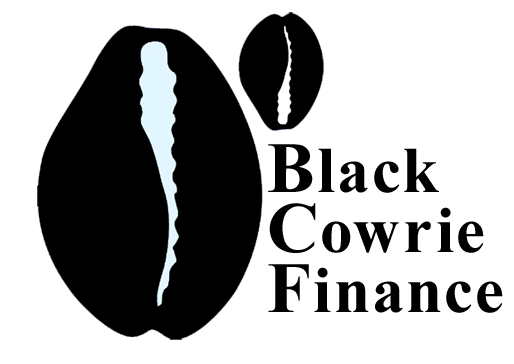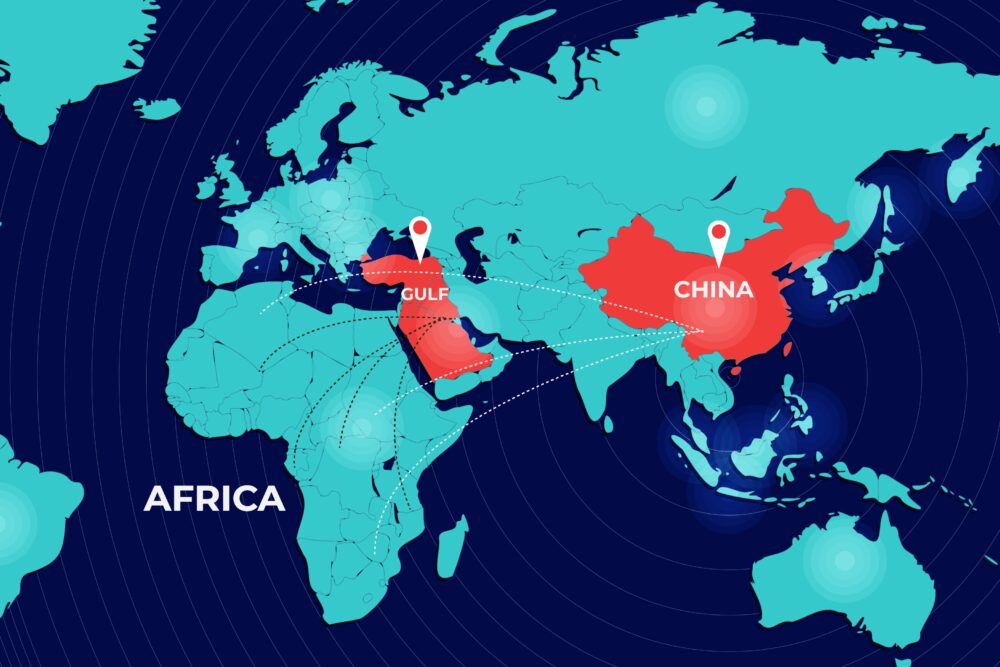The cowrie — or cowry — shell was one of the most successful and universal forms of currency in the world. In West Africa though, the humble shell worked its way into the cultural fiber, taking on a deeper symbolic and ritualistic meaning that has never been entirely lost.
Cowrie Shells as Currency
The attractive white shell has all the characteristics required of money: easy to handle and carry around due to its light weight, non-perishable, good for small and large purchases. Its shape makes it instantly recognizable and difficult to forge. The cowries also have very little variation in size and form, which makes them easy to count.
They were often threaded into bracelets or long strings of forty, or packed into pouches to form greater quantities. For large payments, the shells could be tossed into baskets and weighed to determine their value.
- 40 cowries made 1 string,
- 50 strings made 1 head (2,000 cowries total),
- 10 heads made 1 bag (20,000 cowries total).
For very large sums, however, the cowrie shells were not very convenient… An anonymous Islamic historian described a man who received a large payment in cowries but ultimately lost money in the deal because hiring porters to carry such a large number of shells back to his village cost him more than the value of the payment.
History of the Shell Money
Caravans of Arab traders were probably the first to introduce the cowrie shell into West Africa, possibly as early as the 8th century. By the 15th century, the shells circulated as money, especially in the Empire of Mali. But it is only with the Portuguese, French, British, and Dutch that Africa found itself under an avalanche of these shells. The Europeans had seen the fondness that certain African tribes had for the little shells and helped to make them the main currency in the trade of slaves, gold, and many other goods.
“Dutch traders reported that African merchants in Dahomey [in present-day Benin] who were unfamiliar with paper and writing were highly suspicious of the European promissory notes, checking them frequently to make sure that the writing hadn’t disappeared, leaving them a worthless scrap of paper. Similarly, European traders were at first wary of trading their manufactured goods for shells until they saw that cowries were widely accepted as money throughout the region.”
— Willie F. Page & R. Hunt Davis, Jr, 2001*
For a long time, the cowrie coexisted with many other forms of currency across West Africa: silver coins and gold dust, but also salt bars, brass and copper rods, and horse-shoe shaped manillas, cloth currencies, beads, etc.
By the 18th century, the cowrie had become the currency of choice along the trade routes of West Africa. It conserved its status as a means of payment, and a symbol of wealth and power, until the 20th century.
Everyday Usage

In small villages, trade was the elders’ responsibility and privilege. The goods that the villagers produced — excess grain, honey from beekeeping, cloth, forged metals, etc — were sold and the proceeds stored in common funds as obligatory contributions. Elders used the stored cowries to buy necessities like tools, medicine, or cattle for the community. Much of the trade the villagers, themselves, did was in the form of barter, and involved no money: a sack of peanuts in exchange for a cooking pot, a hoe for a nice basket.
-
Previous Post
Value of Cowrie Determined by Law of Supply and Demand
-
Next Post
The Cowrie – Present-day Status








